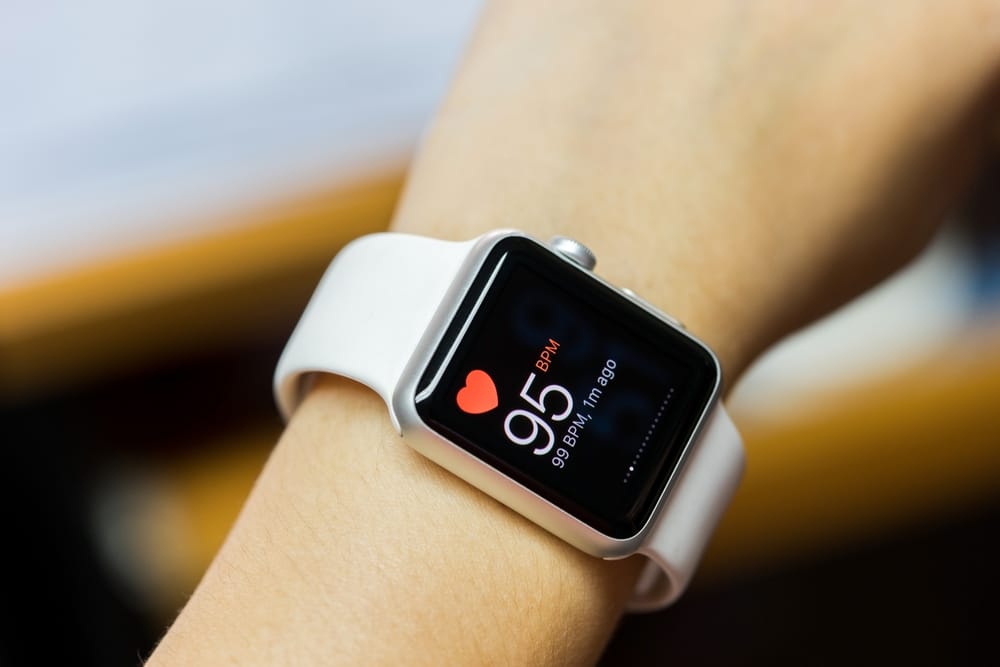Smartwatch health tracking has revolutionised the way we monitor our vital signs, offering insights into our heart health with just a glance at our wrist.
But how accurate are these devices, especially during conditions like rapid heart rate episodes? With the advent of technology, ensuring the reliability of these readings has never been more critical.
The integration of health monitoring features in smartwatches has made them more than just a tool for timekeeping or notifications. They now serve as gateways to understanding our health, particularly heart rate monitoring, which is pivotal for detecting irregularities and managing conditions. As these devices weave into the fabric of health management, scrutinising their accuracy and reliability becomes essential, especially in medically significant scenarios.
Heart Rate Monitoring Accuracy
Research into the accuracy of smartwatches in heart rate monitoring reveals promising results. One pivotal study highlighted the effectiveness of popular devices like the Apple Watch Series 2, Samsung Galaxy Gear S3, and Fitbit Charge 2 in measuring heart rate accurately, even during episodes of rapid heart rate, a condition known as paroxysmal supraventricular tachycardia (PSVT). This condition, characterised by sudden, rapid heartbeats, presents a significant test to the precision of wearable devices.
The study found an impressive accuracy rate in detecting baseline heart rates, with Apple and Samsung devices hitting a 100% accuracy mark, and Fitbit following closely at 94%. Even more, during PSVT episodes, Apple and Samsung maintained their 100% accuracy, while Fitbit recorded an 88% accuracy rate.
Blood Oxygen Saturation (SpO2) Measurement Accuracy
The accuracy of SpO2 measurements by smartwatches has been examined in various studies, offering insights into how these devices compare with traditional medical oximeters. A significant study compared the SpO2 measurement accuracy of popular smartwatches against the FDA-cleared Masimo MightySat reference standard.
Devices such as the Apple Watch Series 7, Garmin Venu 2S, Garmin Fenix 6 Pro, and Withings ScanWatch were evaluated. The results showed variations in accuracy, with a notable portion of measurements falling within the acceptable 2% error range from the clinical-grade standard. This suggests that while there are discrepancies, certain smartwatches can offer reasonably accurate SpO2 readings.
Another study focused on patients with lung diseases, including COPD and ILD, as well as healthy individuals, comparing SpO2 and heart rate values between Apple Watch devices and conventional oximeters.
The findings highlighted strong positive correlations between the Apple Watch and commercial oximeters for both SpO2 and heart rate measurements. The Bland–Altman plots, used to assess the agreement between the devices, indicated a mean bias of 0.8% for SpO2 measurements, which falls within an acceptable range, demonstrating the Apple Watch’s capability to provide comparable SpO2 values to commercial oximeters.
A notable study on the Galaxy Watch 4 evaluated its SpO2 sensor accuracy against medical tools for monitoring obstructive sleep apnea (OSA) during sleep. The findings revealed that the smartwatch’s readings closely matched those from traditional medical systems, suggesting that devices like the Galaxy Watch 4 could serve as cost-effective alternatives for obtaining accurate health metrics, including SpO2 levels, especially in the context of sleep-related disorders.
Limitations and Considerations in Smartwatch Health Tracking
While smartwatches offer numerous benefits, such as increased convenience and advanced health monitoring features, they also come with several limitations that users should consider:
- Accuracy Concerns: One of the primary drawbacks is the potential inaccuracy of data, particularly for metrics like calories burnt and heart rate. Studies have shown that up to 80% of this data can be incorrect, which might impact individuals relying on these metrics for health management.
- Battery Life: Most smartwatches have a limited battery life, typically lasting between one and two days. This necessitates regular charging, which could be inconvenient for users, especially those tracking sleep or requiring continuous health monitoring.
- Dependence on Smartphone: Many smartwatch functions are tethered to a smartphone connection, limiting their standalone capabilities. This dependence means that for a full range of features, the smartphone needs to be within Bluetooth range, which could be restrictive.
- Screen Size and Usability: The compact nature of smartwatches results in a small screen size, which can make interacting with apps and reading notifications challenging, especially for users with larger fingers.
When considering a smartwatch, especially for health tracking, it’s crucial to weigh these limitations against the benefits. Users should assess their specific needs, preferences, and budget to determine whether a smartwatch is a right tool for their health management strategy.
Smartwatches offer a convenient and innovative way to keep an eye on personal health metrics and encourage a more active and health-conscious lifestyle. However, it’s important to approach them as complements, rather than replacements, for professional medical advice and traditional health monitoring methods. As technology advances, we can anticipate further improvements in the accuracy, functionality, and usability of smartwatch health tracking, making them even more integral to everyday health management.
References
- Jung, H., Kim, D., Lee, W., Seo, H., Seo, J. H., Choi, J., & Joo, E. Y. (2022, October 1). Performance evaluation of a wrist-worn reflectance pulse oximeter during sleep. Sleep Health. https://doi.org/10.1016/j.sleh.2022.04.003
- Spaccarotella, C., Polimeni, A., Mancuso, C., Pelaia, G., Esposito, G., & Indolfi, C. (2022, March 8). Assessment of Non-Invasive Measurements of Oxygen Saturation and Heart Rate with an Apple Smartwatch: Comparison with a Standard Pulse Oximeter. Journal of Clinical Medicine. https://doi.org/10.3390/jcm11061467
- Pipek, L. Z., Nascimento, R. F. V., Acencio, M. M. P., & Teixeira, L. R. (2021, September 23). Comparison of SpO2 and heart rate values on Apple Watch and conventional commercial oximeters devices in patients with lung disease. Scientific Reports. https://doi.org/10.1038/s41598-021-98453-3
- Jiang, Y., Spies, C., Magin, J., Bhosai, S. J., Snyder, L. D., & Dunn, J. (2023, July 12). Investigating the accuracy of blood oxygen saturation measurements in common consumer smartwatches. PLOS Digital Health. https://doi.org/10.1371/journal.pdig.0000296
- Sarhaddi, F., Kazemi, K., Azimi, I., Cao, R., Niela‐Vilén, H., Axelin, A., Liljeberg, P., & Rahmani, A. M. (2022, May 1). A comprehensive accuracy assessment of Samsung smartwatch heart rate and heart rate variability. medRxiv (Cold Spring Harbor Laboratory). https://doi.org/10.1101/2022.04.29.22274461
- New Study Show Popular Smart Watches Accurately Measure Rapid Heart Beat. (n.d.). Heart Rhythm Society. https://www.hrsonline.org/news/press-releases/new-study-show-popular-smart-watches-accurately-measure-rapid-heart-beat













